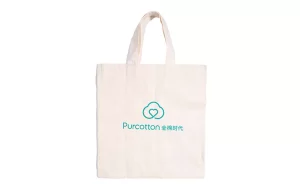As a professional non-woven bags manufacturer, we at Winner Nonwovens frequently receive questions about non-woven material. Many people want to know whether it is a good choice for daily use or if there are concerns they should be aware of. In this article, we provide a balanced look at non-woven fabrics, focusing on printed non-woven bags, their benefits, and factors to consider.
Durability and Practical Use
Non woven material is known for its strength and lightweight nature. Unlike single-use plastic bags, non-woven fabric can carry heavier items without tearing. This makes printed non-woven bags a practical option for shopping, storage, and promotional purposes. The durability of the fabric ensures that it can withstand repeated use, which adds value for both consumers and businesses. At Winner Nonwovens, we prioritize producing bags that maintain their strength and appearance even after frequent use.
Environmental Impact
One of the main concerns people raise is the environmental effect of non-woven material. Standard non-woven fabrics are made from polypropylene, which is not biodegradable. However, the repeated use of printed non-woven bags helps reduce reliance on disposable plastic bags, indirectly lowering waste. Some non-woven materials can also be produced with recyclable components or biodegradable additives, offering more eco friendly options. Choosing non-woven bags thoughtfully can contribute to more responsible consumption.
Versatility and Design Options
Non woven material is versatile, which makes it suitable for various types of bags and applications. Printed non-woven bags allow businesses to display logos or designs clearly, making them useful for branding and promotions. The fabric can be produced in different colors, textures, and weights, allowing users to select options that meet both functional and aesthetic needs. Winner Nonwovens ensures that our bags provide practical benefits while supporting marketing and promotional efforts.
Considerations for Use and Disposal
While non-woven material has many advantages, it is important to understand its limitations. It is not naturally biodegradable, and improper disposal can contribute to environmental concerns. To maximize its benefits, consumers should reuse printed non-woven bags as much as possible and explore recycling options where available. Repurposing bags for storage, organization, or transport of other items further extends their usefulness and reduces environmental impact.
Conclusion
Non woven material offers a combination of durability, versatility, and practicality, making it a solid choice for printed non-woven bags. At Winner Nonwovens, we focus on producing high quality bags that meet everyday needs while promoting reuse and responsible consumption. Understanding both the advantages and considerations of non-woven fabrics helps consumers and businesses make informed decisions. By using non-woven bags thoughtfully, it is possible to enjoy their benefits while contributing to a more sustainable approach to shopping and packaging.











